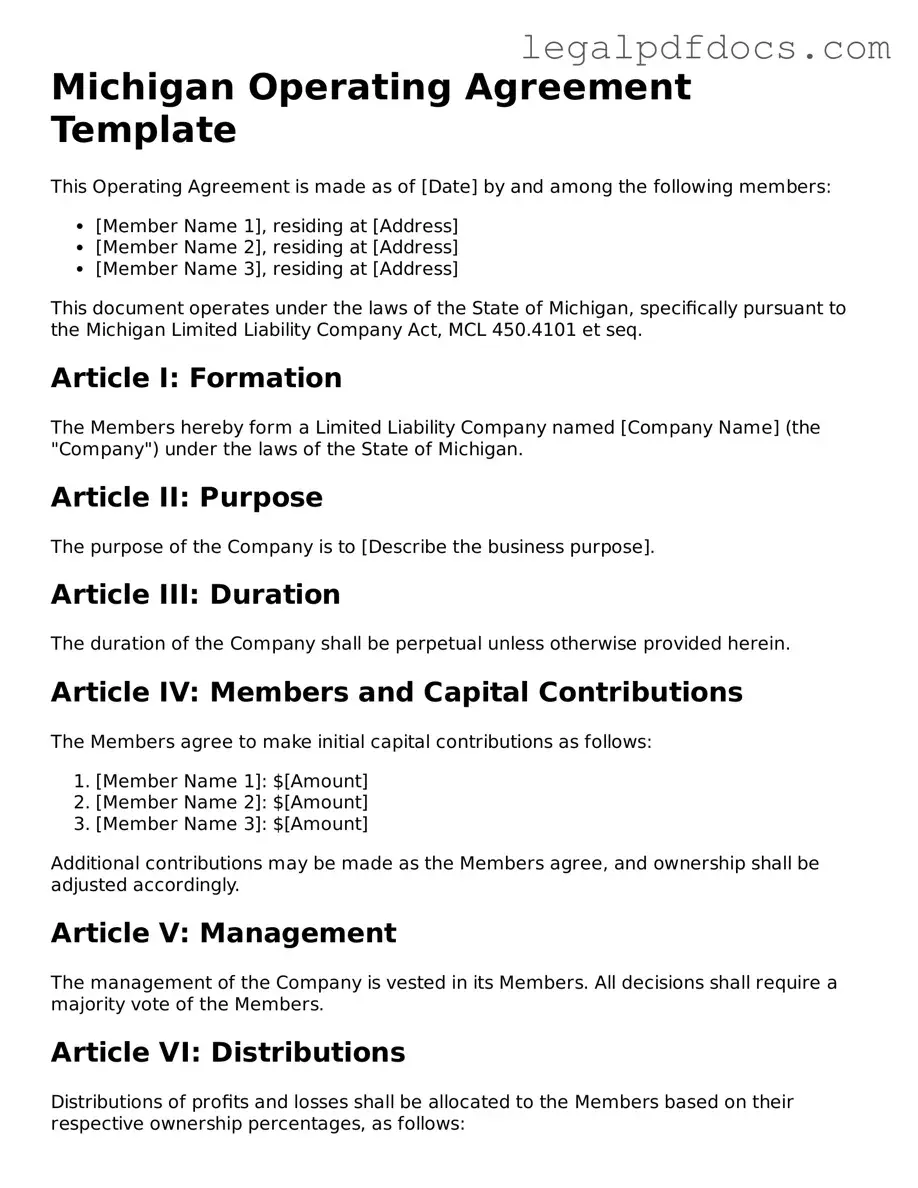Official Operating Agreement Form for Michigan
The Michigan Operating Agreement is a crucial document that outlines the management structure and operating procedures for a limited liability company (LLC) in Michigan. This agreement serves as a roadmap for how the business will be run, detailing the rights and responsibilities of its members. Understanding and completing this form accurately can help ensure smooth operations and compliance with state regulations.
Ready to get started? Fill out the form by clicking the button below!
Open Operating Agreement Editor Here
